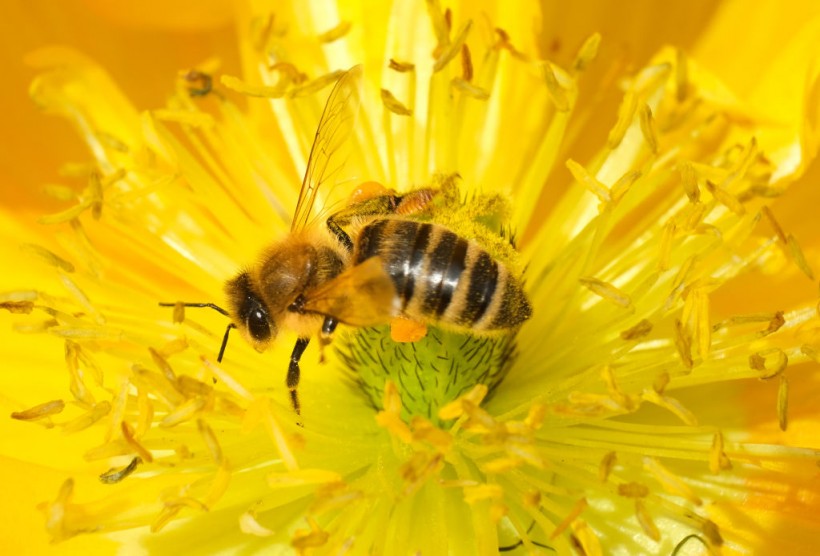Bees are the unsung heroes of agriculture, contributing billions to global crop production. Their critical role, however, faces a slew of challenges, ranging from habitat loss to climate change - and now pesticides.
A new study published in Scientific Reports has revealed a previously unknown threat to these vital pollinators: pesticides' so-called "inert" ingredients, we learn in a report.

BERLIN, GERMANY - MAY 17: A bee scrambles across a flower on May 17, 2019 in Berlin, Germany. May 20 is World Bee Day, which is drawing more attention this year in comparison to previous years due to the strong and ongoing decline of bee populations in industrialized nations across the globe.
How 'Inert' Pesticide Ingredients Are Affecting Bees
In pesticides, active ingredients are the commonly recognized components designed to control pests, listed on product labels. The lesser-known "inert" ingredients serve various functions, including extending shelf life, aiding pesticide application, or enhancing efficacy. However, their true impact on bees has largely remained a mystery.
This recent study focused on the fungicide Pristine, commonly used in almond and crop farming. Surprisingly, the research revealed that while the active ingredients alone did not affect bees, the complete Pristine formulation, inclusive of inert ingredients, significantly affected bee memory.
This discovery suggests that the previously disregarded inert ingredients might hold the key to the toxicity of certain pesticides to bees.
Read Also: AI Image Generation Tools Contributing to Carbon Footprint, Study Shows
A Closer Look
These findings call into question the commonly held belief that "inert" means "harmless." The Environmental Protection Agency (EPA) acknowledges that these components are not necessarily inactive or non-toxic, complicating pesticide formulation regulation even further.
Unlike active ingredients, the specifics of inert ingredients are often kept confidential by manufacturers, limiting transparency and understanding.
The study's implications extend beyond the Pristine fungicide. They raise concerns about the broader impact of inert ingredients across various pesticides.
Previous research has demonstrated that exposure to specific types of adjuvants impaired bees' learning abilities. Moreover, when inert ingredients are combined with active ones or other pesticides, they become more deadly for these insects, exacerbating the risks for bee populations.
In a study from 2021, a substance called alcohol ethoxylates, found in a fungicide called Amistar, harmed 30% of the bees that came into contact with it.
Current Regulatory Framework
What makes this revelation alarming is the current regulatory framework's limitations. Pesticide testing primarily focuses on acute toxicity, overlooking sublethal and chronic effects that could severely weaken bee colonies over time.
Bees may encounter pesticides repeatedly through contaminated nectar or pollen, leading to long-term exposure with subtle or delayed symptoms.
While the EPA mandates toxicity testing for active ingredients, inert ingredients are shielded as trade secrets, contributing to a chemical 'black box.'
However, mounting evidence underscores the need for a comprehensive reevaluation of pesticide risk assessments. The call for testing entire pesticide formulations, including inert ingredients, gains urgency to ensure a more accurate understanding of their impact on bees.
Proposed changes in pesticide regulation include the identification of inert ingredients on product labels and increased testing for long-term sublethal effects. These measures aim to support bee health by providing a more holistic evaluation of pesticide risks.
Stay posted here at Tech Times.
Related Article: Researchers Develop Genetically Modified Christmas Trees with Enhanced Symmetry, Rapid Growth, Extended Needle Retention










